Epigraphy, Iconography, and the Bible
Published: Dec 2021
£85.00
The study of the Bible has long been illuminated by 'light from the East' (in the famous phrase of Adolf Deissmann in 1908). Almost daily, new artifacts and inscriptions are announced that will have an impact on how the Bible is read and understood.
Following Meir Lubetski's SPP collection New Seals and Inscriptions, Hebrew, Idumean and Cuneiform in 2007 and his Festschrift, Visions of Life in Biblical Times in 2015, the present volume garners papers from a wide and distinguished panel of specialists in the Ancient Near East that revisit former assumptions and present new insights on the relevance of its material culture to the Bible.
Among the papers, Alan Millard reviews the issue of the use of the early alphabets, André Lemaire revisits the Mesha stele (the Moabite Stone), and Pieter Gert van der Veen takes a fresh look at the seal of Shema with its famous lion (still adorning the cover of the Journal for the Study of the Old Testament). Bezalel Porten contributes a fascinating study, illustrated by twenty colour diagrams, of documents on papyrus or ostraca requesting provisions from storerooms—an insight into the practicalities of daily administrative life in Egypt, Idumea and Israel.
There are papers also on the arks of the Hebrew Bible (Yigal Levin), on alleged identifications of Hebrew kings in inscriptions (Lawrence Mykytiuk), on literary images in the Tell Fekheriye inscription and the book of Lamentations (Gideon Kotzé) and on Judaean pillar figurines of women that are ubiquitous in archaeological excavations from Iron Age Judah.
Epigraphy, Iconography, and the Bible, in sum, is something of a cornucopia of new and revised data about the Hebrew Bible in its ancient context, intelligible to scholars, students and a more general public alike.
Epigraphy, Iconography, and the Bible
£85.00
The study of the Bible has long been illuminated by 'light from the East' (in the famous phrase of Adolf Deissmann in 1908). Almost daily, new artifacts and inscriptions are announced that will have an impact on how the Bible is read and understood.
Following Meir Lubetski's SPP collection New Seals and Inscriptions, Hebrew, Idumean and Cuneiform in 2007 and his Festschrift, Visions of Life in Biblical Times in 2015, the present volume garners papers from a wide and distinguished panel of specialists in the Ancient Near East that revisit former assumptions and present new insights on the relevance of its material culture to the Bible.
Among the papers, Alan Millard reviews the issue of the use of the early alphabets, André Lemaire revisits the Mesha stele (the Moabite Stone), and Pieter Gert van der Veen takes a fresh look at the seal of Shema with its famous lion (still adorning the cover of the Journal for the Study of the Old Testament). Bezalel Porten contributes a fascinating study, illustrated by twenty colour diagrams, of documents on papyrus or ostraca requesting provisions from storerooms—an insight into the practicalities of daily administrative life in Egypt, Idumea and Israel.
There are papers also on the arks of the Hebrew Bible (Yigal Levin), on alleged identifications of Hebrew kings in inscriptions (Lawrence Mykytiuk), on literary images in the Tell Fekheriye inscription and the book of Lamentations (Gideon Kotzé) and on Judaean pillar figurines of women that are ubiquitous in archaeological excavations from Iron Age Judah.
Epigraphy, Iconography, and the Bible, in sum, is something of a cornucopia of new and revised data about the Hebrew Bible in its ancient context, intelligible to scholars, students and a more general public alike.
The Ancient Near East in the Nineteenth Century: III. Fantasy and Alternative Histories
Published: Mar 2021
£22.00 – £70.00
At the beginning of the nineteenth century, little was known of the ancient Near East except for what was preserved in the Bible and classical literature. By the end of the nineteenth century, an amazing transformation had occurred: the basic outline of ancient Near Eastern history was understood and the material culture of the region was recognizable to the general public. This three-volume study explores the various ways that non-specialists would have encountered ancient Egypt, Mesopotamia, and the Holy Land and how they derived and constructed meaning from those discoveries. McGeough challenges the simplistic view that the experience of the ancient Near East was solely a matter of 'othering' and shows how different people claimed the Near East as their own space and how connections were drawn between the ancient and contemporary worlds.
Volume III argues that fiction and fantasy play an important role in establishing expectations about the past. Changing sensitivities towards realism in art meant that imaginary visions were charged with an archaeological aesthetic. Orientalist painting offered seemingly realistic glimpses of ancient life. Stage plays and opera used the ancient Near East for performances that explored contemporary issues. Mummy stories evolved from humorous time-travel tales into horror fiction rooted in fears of materialism, and adventure novels ruminated on the obligations and dangers of empire.
Alongside these explicitly fictional modes of thinking about the past, the nineteenth century saw a rise in popularity of esoteric thinking. People offered alternative versions of ancient history, imagining that ancient religious practices continued into the present, through secret societies like the Freemasons and the Rosicrucians or in the new movements of Mormonism and Theosophy. Volume III ends by examining the interpretations of the Near East offered by Sigmund Freud and H.P. Lovecraft, showing how these two figures influenced later popular experiences of the ancient Near East.
The Ancient Near East in the Nineteenth Century: III. Fantasy and Alternative Histories
£22.00 – £70.00
At the beginning of the nineteenth century, little was known of the ancient Near East except for what was preserved in the Bible and classical literature. By the end of the nineteenth century, an amazing transformation had occurred: the basic outline of ancient Near Eastern history was understood and the material culture of the region was recognizable to the general public. This three-volume study explores the various ways that non-specialists would have encountered ancient Egypt, Mesopotamia, and the Holy Land and how they derived and constructed meaning from those discoveries. McGeough challenges the simplistic view that the experience of the ancient Near East was solely a matter of 'othering' and shows how different people claimed the Near East as their own space and how connections were drawn between the ancient and contemporary worlds.
Volume III argues that fiction and fantasy play an important role in establishing expectations about the past. Changing sensitivities towards realism in art meant that imaginary visions were charged with an archaeological aesthetic. Orientalist painting offered seemingly realistic glimpses of ancient life. Stage plays and opera used the ancient Near East for performances that explored contemporary issues. Mummy stories evolved from humorous time-travel tales into horror fiction rooted in fears of materialism, and adventure novels ruminated on the obligations and dangers of empire.
Alongside these explicitly fictional modes of thinking about the past, the nineteenth century saw a rise in popularity of esoteric thinking. People offered alternative versions of ancient history, imagining that ancient religious practices continued into the present, through secret societies like the Freemasons and the Rosicrucians or in the new movements of Mormonism and Theosophy. Volume III ends by examining the interpretations of the Near East offered by Sigmund Freud and H.P. Lovecraft, showing how these two figures influenced later popular experiences of the ancient Near East.
The Ancient Near East in the Nineteenth Century: II. Collecting, Constructing, and Curating
Published: Mar 2021
£23.00 – £70.00
At the beginning of the nineteenth century, little was known of the ancient Near East except for what was preserved in the Bible and classical literature. By the end of the nineteenth century, an amazing transformation had occurred: the basic outline of ancient Near Eastern history was understood and the material culture of the region was recognizable to the general public. This three-volume study explores the various ways that non-specialists would have encountered ancient Egypt, Mesopotamia, and the Holy Land and how they derived and constructed meaning from those discoveries. McGeough challenges the simplistic view that the experience of the ancient Near East was solely a matter of 'othering' and shows how different people claimed the Near East as their own space and how connections were drawn between the ancient and contemporary worlds.
Volume II examines the different ways that non-specialists encountered the materiality of the ancient Near East over the course of the nineteenth century. During this time, people collected artifacts while traveling in the region or paid to see the collections that others brought back. The public experienced the ancient world in museum exhibits that privileged 'real' artifacts in a new context or in hyper-real displays (like the Crystal Palace) where whole buildings from the ancient Near East were reconstructed. Men and women dressed as biblical characters in travelling fairs or spent an evening unwrapping a mummy. Individuals bought Assyriological souvenirs and employed Egyptian styles in their design, first in higher quality designer products and later in novelty items. Egyptian temples provided the architectural inspiration for buildings in London and the ancient use of colour was a strong argument for reimagining Victorian style. The adoption of Egypt, especially, in the world's-fair phenomenon linked the ancient Near East with a global future in which change was naturalized and consumers were taught not to be afraid of the transformations brought by the industrial age.
The Ancient Near East in the Nineteenth Century: II. Collecting, Constructing, and Curating
£23.00 – £70.00
At the beginning of the nineteenth century, little was known of the ancient Near East except for what was preserved in the Bible and classical literature. By the end of the nineteenth century, an amazing transformation had occurred: the basic outline of ancient Near Eastern history was understood and the material culture of the region was recognizable to the general public. This three-volume study explores the various ways that non-specialists would have encountered ancient Egypt, Mesopotamia, and the Holy Land and how they derived and constructed meaning from those discoveries. McGeough challenges the simplistic view that the experience of the ancient Near East was solely a matter of 'othering' and shows how different people claimed the Near East as their own space and how connections were drawn between the ancient and contemporary worlds.
Volume II examines the different ways that non-specialists encountered the materiality of the ancient Near East over the course of the nineteenth century. During this time, people collected artifacts while traveling in the region or paid to see the collections that others brought back. The public experienced the ancient world in museum exhibits that privileged 'real' artifacts in a new context or in hyper-real displays (like the Crystal Palace) where whole buildings from the ancient Near East were reconstructed. Men and women dressed as biblical characters in travelling fairs or spent an evening unwrapping a mummy. Individuals bought Assyriological souvenirs and employed Egyptian styles in their design, first in higher quality designer products and later in novelty items. Egyptian temples provided the architectural inspiration for buildings in London and the ancient use of colour was a strong argument for reimagining Victorian style. The adoption of Egypt, especially, in the world's-fair phenomenon linked the ancient Near East with a global future in which change was naturalized and consumers were taught not to be afraid of the transformations brought by the industrial age.
Persuading God: Rhetorical Studies of First-Person Psalms
Published: Sep 2017
£19.00 – £45.00
Written by a scholar of rhetoric, Persuading God demonstrates that the first-person psalms that make up over a third of the Book of Psalms were designed not simply to express the feelings of individual Israelites but to persuade God to act.
The book casts a new light on the roles of all the players in the situations in which the psalms were composed and performed: the person represented by the speaker on whose particular troubles the psalm is based, the spectators and opponents who are sometimes addressed directly by the speaker, the poet-musicians who craft the speaker's case and occasionally undermine it, and most of all, God as the direct addressee whose presumed openness to persuasion and willingness to intervene underlie the entire event.
The readings provide new explanations for many long-standing puzzles: how to deal with the long string of imprecations in Psalm 109, whether Psalm 4 is best read as protesting a false accusation or as countering apostasy, why so many verses in Psalm 62 begin with the exclamation ach , and, more generally, why so many first-person psalms seem to swing abruptly between despair and praise.
The book demonstrates the relevance of contemporary rhetorical theory to Hebrew Bible studies, including the work of ChaÌøm Perelman and Lucie Olbrechts-Tyteca, Kenneth Burke, and Mikhail Bakhtin. It also illuminates the state of rhetorical practice in the ancient Near East at the same time that rhetorical theories were first being codified and taught in archaic and classical Athens.
Persuading God: Rhetorical Studies of First-Person Psalms
£19.00 – £45.00
Written by a scholar of rhetoric, Persuading God demonstrates that the first-person psalms that make up over a third of the Book of Psalms were designed not simply to express the feelings of individual Israelites but to persuade God to act.
The book casts a new light on the roles of all the players in the situations in which the psalms were composed and performed: the person represented by the speaker on whose particular troubles the psalm is based, the spectators and opponents who are sometimes addressed directly by the speaker, the poet-musicians who craft the speaker's case and occasionally undermine it, and most of all, God as the direct addressee whose presumed openness to persuasion and willingness to intervene underlie the entire event.
The readings provide new explanations for many long-standing puzzles: how to deal with the long string of imprecations in Psalm 109, whether Psalm 4 is best read as protesting a false accusation or as countering apostasy, why so many verses in Psalm 62 begin with the exclamation ach , and, more generally, why so many first-person psalms seem to swing abruptly between despair and praise.
The book demonstrates the relevance of contemporary rhetorical theory to Hebrew Bible studies, including the work of ChaÌøm Perelman and Lucie Olbrechts-Tyteca, Kenneth Burke, and Mikhail Bakhtin. It also illuminates the state of rhetorical practice in the ancient Near East at the same time that rhetorical theories were first being codified and taught in archaic and classical Athens.
The Ancient Near East in the Nineteenth Century: I. Claiming and Conquering
Published: Apr 2015
£22.50 – £70.00
At the beginning of the nineteenth century, little was known of the ancient Near East except for what was preserved in the Bible and Classical literature. By the end of that century, an amazing transformation had occurred: the basic outline of ancient Near Eastern history was now understood and the material culture of the region was recognizable to the general public. This three-volume study explores the various ways by which non-specialists would have encountered ancient Egypt, Mesopotamia, and the Holy Land and how they derived and constructed meaning from those discoveries. McGeough challenges the simplistic view that the experience of the ancient Near East was solely a matter of 'othering' and shows how different people claimed the Near East as their own space and how connections were drawn between the ancient and contemporary worlds.
Volume I traces how the study of the ancient Near East developed into a professional discipline and how interpretative frameworks were gradually standardized throughout the nineteenth century. Some of the best-sellers of the period were accounts of the early explorers of the region and, beginning with the Napoleonic expedition, the book examines how ancient Near Eastern discoveries were communicated to the public. It looks at how archaeological reporting was shaped in this period and how the study of the ancient Near East was employed to understand issues of progress and decline and was referenced in the political and social satire of the period. It also documents the growth of middle-class tourism to the region and considers how the changing experiences of travel impacted Near Eastern studies. Throughout, the book observes how the ancient Near East mirrored and subverted British society and played a role in European and North American thinking about their places in a larger global and historical perspective.
The Ancient Near East in the Nineteenth Century: I. Claiming and Conquering
£22.50 – £70.00
At the beginning of the nineteenth century, little was known of the ancient Near East except for what was preserved in the Bible and Classical literature. By the end of that century, an amazing transformation had occurred: the basic outline of ancient Near Eastern history was now understood and the material culture of the region was recognizable to the general public. This three-volume study explores the various ways by which non-specialists would have encountered ancient Egypt, Mesopotamia, and the Holy Land and how they derived and constructed meaning from those discoveries. McGeough challenges the simplistic view that the experience of the ancient Near East was solely a matter of 'othering' and shows how different people claimed the Near East as their own space and how connections were drawn between the ancient and contemporary worlds.
Volume I traces how the study of the ancient Near East developed into a professional discipline and how interpretative frameworks were gradually standardized throughout the nineteenth century. Some of the best-sellers of the period were accounts of the early explorers of the region and, beginning with the Napoleonic expedition, the book examines how ancient Near Eastern discoveries were communicated to the public. It looks at how archaeological reporting was shaped in this period and how the study of the ancient Near East was employed to understand issues of progress and decline and was referenced in the political and social satire of the period. It also documents the growth of middle-class tourism to the region and considers how the changing experiences of travel impacted Near Eastern studies. Throughout, the book observes how the ancient Near East mirrored and subverted British society and played a role in European and North American thinking about their places in a larger global and historical perspective.
Text, Time, and Temple: Literary, Historical and Ritual Studies in Leviticus
Published: Mar 2015
£60.00
In their different ways the essays in this collection ask, Why was Leviticus written? What is the relation of text to practice, and to the development of the idea of an Israelite society centred in its Temple through all vicissitudes of its history?
The thirteen contributors are engaged in exploring the intersection of literary, historical and ritual approaches to Leviticus, as the central book of the Torah and as a utopian vision of an ideal society. Leading scholars of Leviticus and the Pentateuch, like James Watts, Israel Knohl and Christophe Nihan, combine with others whose primary interest is magic, reception, cultural memory and gender.
The collection begins with a chapter by Michael Hundley on the ancient Near Eastern background of the priestly code and the issue of divine fluidity. Several scholars consider the social function of the book, particularly in the Second Temple period. James Watts, for instance, thinks that it combats scepticism about the efficacy of ritual; Reinhard MÌ_ller argues that the 'I am Yhwh' formula locates the texts in a liturgical setting. Christophe Nihan discusses the manipulation of blood in sacrifice as having an indexical function, as part of the 'templization' of Israel.
Other chapters engage in analyses of particular texts. Leigh Trevaskis advocates a symbolic interpretation of the prohibition of intercourse with a menstruant. Deborah Rooke analyses the gender and ethnic implications of the story of the blasphemer in Leviticus 24. Similarly, Francis Landy compares the chapters on the Nazirite and the woman suspected of adultery as challenges to the sacerdotal order. Jonathan Burnside argues that the prohibition of necromancy is integral to Leviticus 20. The book concludes with a moving reflection by Jeremy Milgrom on his father's views on the ethical implications of his work, and particularly its relevance to Israeli —Palestinian relations.
Text, Time, and Temple: Literary, Historical and Ritual Studies in Leviticus
£60.00
In their different ways the essays in this collection ask, Why was Leviticus written? What is the relation of text to practice, and to the development of the idea of an Israelite society centred in its Temple through all vicissitudes of its history?
The thirteen contributors are engaged in exploring the intersection of literary, historical and ritual approaches to Leviticus, as the central book of the Torah and as a utopian vision of an ideal society. Leading scholars of Leviticus and the Pentateuch, like James Watts, Israel Knohl and Christophe Nihan, combine with others whose primary interest is magic, reception, cultural memory and gender.
The collection begins with a chapter by Michael Hundley on the ancient Near Eastern background of the priestly code and the issue of divine fluidity. Several scholars consider the social function of the book, particularly in the Second Temple period. James Watts, for instance, thinks that it combats scepticism about the efficacy of ritual; Reinhard MÌ_ller argues that the 'I am Yhwh' formula locates the texts in a liturgical setting. Christophe Nihan discusses the manipulation of blood in sacrifice as having an indexical function, as part of the 'templization' of Israel.
Other chapters engage in analyses of particular texts. Leigh Trevaskis advocates a symbolic interpretation of the prohibition of intercourse with a menstruant. Deborah Rooke analyses the gender and ethnic implications of the story of the blasphemer in Leviticus 24. Similarly, Francis Landy compares the chapters on the Nazirite and the woman suspected of adultery as challenges to the sacerdotal order. Jonathan Burnside argues that the prohibition of necromancy is integral to Leviticus 20. The book concludes with a moving reflection by Jeremy Milgrom on his father's views on the ethical implications of his work, and particularly its relevance to Israeli —Palestinian relations.
Slavery, Abolitionism, and the Ethics of Biblical Scholarship
Published: May 2013
£19.50 – £70.00
In this immensely wide-ranging and fascinating study, Avalos critiques the common claim that the abolition of slavery was due in large part to the influence of biblical ethics. Such a claim, he argues, is characteristic of a broader phenomenon in biblical scholarship, which focuses on defending, rather than describing, the ethical norms encountered in biblical texts.
The first part of Avalos's critique explores how modern scholars have praised the supposed superiority of biblical ethics at the cost of diminishing or ignoring many similar features in ancient Near Eastern cultures. These features include manumission, fixed terms of service, familial rights, and egalitarian critiques of slavery. At the same time, modern scholarship has used the standard tools of biblical exegesis in order to minimize the ethically negative implications of many biblical references to slavery.
The second part of the book concentrates on how the Bible has been used throughout Christian history both to maintain and to extend slavery. In particular, Avalos offers detailed studies of papal documents used to defend the Church's stance on slavery. Discussions of Gregory of Nyssa, Aquinas and Luther, among others, show that they are not such champions of freedom as they are often portrayed.
Avalos's close readings of the writings of major abolitionists such as Granville Sharp, William Wilberforce and Frederick Douglass show an increasing shift away from using the Bible as a support for abolitionism. Biblical scholars have rarely recognized that pro-slavery advocates could use the Bible just as effectively. According to Avalos, one of the complex mix of factors leading to abolition was the abandonment of the Bible as an ethical authority. The case of the biblical attitude to slavery is just one confirmation of how unsuitable the Bible is as a manual of ethics in the modern world.
Slavery, Abolitionism, and the Ethics of Biblical Scholarship
£19.50 – £70.00
In this immensely wide-ranging and fascinating study, Avalos critiques the common claim that the abolition of slavery was due in large part to the influence of biblical ethics. Such a claim, he argues, is characteristic of a broader phenomenon in biblical scholarship, which focuses on defending, rather than describing, the ethical norms encountered in biblical texts.
The first part of Avalos's critique explores how modern scholars have praised the supposed superiority of biblical ethics at the cost of diminishing or ignoring many similar features in ancient Near Eastern cultures. These features include manumission, fixed terms of service, familial rights, and egalitarian critiques of slavery. At the same time, modern scholarship has used the standard tools of biblical exegesis in order to minimize the ethically negative implications of many biblical references to slavery.
The second part of the book concentrates on how the Bible has been used throughout Christian history both to maintain and to extend slavery. In particular, Avalos offers detailed studies of papal documents used to defend the Church's stance on slavery. Discussions of Gregory of Nyssa, Aquinas and Luther, among others, show that they are not such champions of freedom as they are often portrayed.
Avalos's close readings of the writings of major abolitionists such as Granville Sharp, William Wilberforce and Frederick Douglass show an increasing shift away from using the Bible as a support for abolitionism. Biblical scholars have rarely recognized that pro-slavery advocates could use the Bible just as effectively. According to Avalos, one of the complex mix of factors leading to abolition was the abandonment of the Bible as an ethical authority. The case of the biblical attitude to slavery is just one confirmation of how unsuitable the Bible is as a manual of ethics in the modern world.
Paradoxes of Paradise: Identity and Difference in the Song of Songs, Second Edition
Published: May 2011
£22.50
Rabbi Akiba is famously reported to have said, 'Heaven forbid that any one in Israel ever disputed that the Song of Songs is holy, for the whole world is not worth the day on which the Song of Songs was given to Israel, for all the writings are holy, but the Song of Songs is the Holy of Holies'. This book is an extended elaboration of Rabbi Akiba's statement. It argues that the Song is a Hellenistic composition, drawing on the resources of ancient Near Eastern erotic poetry and characterized by a complex though fragile unity.
Through the metaphors, the lovers progressively see themselves reflected in each other, as well as in the world about them and the poetry of love. The poem celebrates the land of Israel in spring, an ideal humanity, and a perfected language. It culminates in the contestation of love and death, and the assertion that only love survives the exigencies of time.
The pervasive ambiguity of the Song, in which one never quite knows what happens, is related to the ambivalence of beauty, which is closely related to ugliness. Hence the surrealist imagery of the Song verges upon the grotesque and stretches the resources of our imagination. Through a detailed comparison with the Garden of Eden story, Landy argues that the Song is a vision of paradise seen from the outside, through the ironic poetic gaze, in a world potentially hostile or indifferent.
Paradoxes of Paradise: Identity and Difference in the Song of Songs, Second Edition
£22.50
Rabbi Akiba is famously reported to have said, 'Heaven forbid that any one in Israel ever disputed that the Song of Songs is holy, for the whole world is not worth the day on which the Song of Songs was given to Israel, for all the writings are holy, but the Song of Songs is the Holy of Holies'. This book is an extended elaboration of Rabbi Akiba's statement. It argues that the Song is a Hellenistic composition, drawing on the resources of ancient Near Eastern erotic poetry and characterized by a complex though fragile unity.
Through the metaphors, the lovers progressively see themselves reflected in each other, as well as in the world about them and the poetry of love. The poem celebrates the land of Israel in spring, an ideal humanity, and a perfected language. It culminates in the contestation of love and death, and the assertion that only love survives the exigencies of time.
The pervasive ambiguity of the Song, in which one never quite knows what happens, is related to the ambivalence of beauty, which is closely related to ugliness. Hence the surrealist imagery of the Song verges upon the grotesque and stretches the resources of our imagination. Through a detailed comparison with the Garden of Eden story, Landy argues that the Song is a vision of paradise seen from the outside, through the ironic poetic gaze, in a world potentially hostile or indifferent.
Biblical Curses and the Displacement of Tradition
Published: Mar 2011
£70.00
In Biblical Curses and the Displacement of Tradition Brian Britt offers an intriguing perspective on curses as the focus of debates over the power, pleasure, and danger of words. Biblical authors transformed ancient Near Eastern curses against rival ethnic groups, disobedient ancestors, and the day of one's own birth with great variety and ingenuity.
Transformations of biblical curses proliferated in post-biblical history, even during periods of 'secularization'. This study argues that biblical, early modern, and contemporary transformations of curses constitute displacements rather than replacements of earlier traditions.
The crucial notion of displacement draws from Freud's psychoanalytic theory, Nietzsche's critical philosophy, and Benjamin's engagement with textual tradition; it highlights not only manifest shifts but also many hidden continuities between cursing in biblical texts and cursing in such 'secular' domains as literature, law, politics, and philosophy. The tradition of biblical cursing —neither purely 'religious' nor purely 'secular' —travels through these texts and contexts as it redefines verbal, human, and supernatural power.
Biblical Curses and the Displacement of Tradition
£70.00
In Biblical Curses and the Displacement of Tradition Brian Britt offers an intriguing perspective on curses as the focus of debates over the power, pleasure, and danger of words. Biblical authors transformed ancient Near Eastern curses against rival ethnic groups, disobedient ancestors, and the day of one's own birth with great variety and ingenuity.
Transformations of biblical curses proliferated in post-biblical history, even during periods of 'secularization'. This study argues that biblical, early modern, and contemporary transformations of curses constitute displacements rather than replacements of earlier traditions.
The crucial notion of displacement draws from Freud's psychoanalytic theory, Nietzsche's critical philosophy, and Benjamin's engagement with textual tradition; it highlights not only manifest shifts but also many hidden continuities between cursing in biblical texts and cursing in such 'secular' domains as literature, law, politics, and philosophy. The tradition of biblical cursing —neither purely 'religious' nor purely 'secular' —travels through these texts and contexts as it redefines verbal, human, and supernatural power.
Men and Masculinity in the Hebrew Bible and Beyond
Published: Nov 2010
£60.00
The study of masculinity in the Bible is increasingly becoming established as a field of critical inquiry in biblical gender studies. This book highlights a variety of methodological approaches that reveal the complex and multifaceted construction of masculinity in biblical and post-biblical literature. It focuses uniquely and explicitly on men and the world they inhabit, documenting changes in the type of men and masculinities deemed legitimate, or illegitimate, across various social and historical contexts of the ancient Near East. At the same time, it interrogates readers' assumptions about the writers' positioning of male bodies, sexuality and relationships in a gender order created to reflect men's interests, yet in need of constant reordering.
In this volume specific features of biblical masculinity are explored: the masculinity of less favoured sons in Genesis (Susan Haddox); the ideology of Temple masculinity in Chronicles (Roland Boer); the masculinity of Moses (Brian DiPalma); the performative nature of masculinity in the Sinai episode (David Clines); Deuteronomy's regimentation of masculinity (Mark George); Joshua's hegemonic masculinity in the Conquest Narrative (Ovidiu Creangă); Naaman's disability in relation to ideologies of masculinity (Cheryl Strimple and Ovidiu Creangă); Job's position as a man in charge in the Testament of Job (Maria Haralambakis); Priestly notions of sexuality in the covenant of the rainbow and circumcision in Genesis (Sandra Jacobs); Samson's masculinity in terms of male honour (Ela Lazarewicz-Wyrzykowska); the popular depiction of Jeremiah as a 'lamenting prophet' against the book of Jeremiah's male ideology (C.J. Patrick Davis); the gendered interaction of a Bible-study group with Daniel's dreams (Andrew Todd). Finally, David Clines and Stephen Moore offer closing critical reflections that situate the book's topics within a broader spectrum of issues in masculinity.
Men and Masculinity in the Hebrew Bible and Beyond
£60.00
The study of masculinity in the Bible is increasingly becoming established as a field of critical inquiry in biblical gender studies. This book highlights a variety of methodological approaches that reveal the complex and multifaceted construction of masculinity in biblical and post-biblical literature. It focuses uniquely and explicitly on men and the world they inhabit, documenting changes in the type of men and masculinities deemed legitimate, or illegitimate, across various social and historical contexts of the ancient Near East. At the same time, it interrogates readers' assumptions about the writers' positioning of male bodies, sexuality and relationships in a gender order created to reflect men's interests, yet in need of constant reordering.
In this volume specific features of biblical masculinity are explored: the masculinity of less favoured sons in Genesis (Susan Haddox); the ideology of Temple masculinity in Chronicles (Roland Boer); the masculinity of Moses (Brian DiPalma); the performative nature of masculinity in the Sinai episode (David Clines); Deuteronomy's regimentation of masculinity (Mark George); Joshua's hegemonic masculinity in the Conquest Narrative (Ovidiu Creangă); Naaman's disability in relation to ideologies of masculinity (Cheryl Strimple and Ovidiu Creangă); Job's position as a man in charge in the Testament of Job (Maria Haralambakis); Priestly notions of sexuality in the covenant of the rainbow and circumcision in Genesis (Sandra Jacobs); Samson's masculinity in terms of male honour (Ela Lazarewicz-Wyrzykowska); the popular depiction of Jeremiah as a 'lamenting prophet' against the book of Jeremiah's male ideology (C.J. Patrick Davis); the gendered interaction of a Bible-study group with Daniel's dreams (Andrew Todd). Finally, David Clines and Stephen Moore offer closing critical reflections that situate the book's topics within a broader spectrum of issues in masculinity.
Orientalism, Assyriology and the Bible
Published: Oct 2007
£22.50 – £60.00
'Orientalism' refers both to the academic study of the Orient and to Western scholarship that clings to stock images of the timeless East and oriental despotism. This landmark collection of essays, the first in its field, is written by seasoned art historians, Assyriologists and biblical specialists; it is organized under four rubrics:
1. Intellectual and Disciplinary Histories identifies waymarks in the rise of Assyriology in America, shifting images of ancient Assyria in their cultural context, Smithsonian Institution exhibits of 'biblical antiquities' at the world's fairs of 1893 and 1895, the rise of Egyptology in the nineteenth century, Mari scholarship and its impact on biblical studies, and the ancient Near Eastern text anthology as genre (Foster, Frahm, Holloway Reid, Younger).
2. Visual Perspectives suggests itself as a corrective to the academic habit of conjuring a 'texted Orient'. Here are contributions that describe Assyrianizing engravings in the famous Dalziels' Bible Gallery, the reception of ancient Assyria in nineteenth-century England versus France, and artwork for twentieth-century American histories of Israel (Bohrer, Esposito, Long).
3. Of Harems and Heroines explores gender issues in the context of the figure of Semiramis and the idea of the harem in biblical research and Assyriology (Asher-Greve, Solvang).
4. Assyriology and the Bible offers essays that focus on specific figures (Josiah), texts (Genesis 28.10-22, the Uruk Prophecy), or periods (Persian period in biblical historiography) (Grabbe, Handy, Hurowitz, Scurlock).
The volume includes a Bibliography of some 1000 items, an important resource.
Orientalism, Assyriology and the Bible
£22.50 – £60.00
'Orientalism' refers both to the academic study of the Orient and to Western scholarship that clings to stock images of the timeless East and oriental despotism. This landmark collection of essays, the first in its field, is written by seasoned art historians, Assyriologists and biblical specialists; it is organized under four rubrics:
1. Intellectual and Disciplinary Histories identifies waymarks in the rise of Assyriology in America, shifting images of ancient Assyria in their cultural context, Smithsonian Institution exhibits of 'biblical antiquities' at the world's fairs of 1893 and 1895, the rise of Egyptology in the nineteenth century, Mari scholarship and its impact on biblical studies, and the ancient Near Eastern text anthology as genre (Foster, Frahm, Holloway Reid, Younger).
2. Visual Perspectives suggests itself as a corrective to the academic habit of conjuring a 'texted Orient'. Here are contributions that describe Assyrianizing engravings in the famous Dalziels' Bible Gallery, the reception of ancient Assyria in nineteenth-century England versus France, and artwork for twentieth-century American histories of Israel (Bohrer, Esposito, Long).
3. Of Harems and Heroines explores gender issues in the context of the figure of Semiramis and the idea of the harem in biblical research and Assyriology (Asher-Greve, Solvang).
4. Assyriology and the Bible offers essays that focus on specific figures (Josiah), texts (Genesis 28.10-22, the Uruk Prophecy), or periods (Persian period in biblical historiography) (Grabbe, Handy, Hurowitz, Scurlock).
The volume includes a Bibliography of some 1000 items, an important resource.
Protest Against God: The Eclipse of a Biblical Tradition
Published: Jan 2007
£15.00 – £50.00
The Hebrew Bible contains many examples of protest or complaint against God. There are classic cases in the psalms of individual lament, but we find the same attitude in community complaint psalms, in the prophetic challenges to God, and in the Book of Job.
And yet, after the exile, the complaint tradition was largely suppressed or marginalized. In this imaginative book, Morrow asks the unheard of question, Why? A shift in the religious imagination of early Judaism had taken place, he argues, spearheaded by the psychology of trauma and by international politics. A magnification of divine transcendence downgraded the intercessory role of the prophet, controlled the raw pain of exile (Lamentations, Second Isaiah), and led to intransigent refusal of the logic of lament (the friends and Yahweh in Job). The theology of complaint was eventually overshadowed by the piety of penitence and praise (the Dead Sea Scrolls).
Modern readers of the Hebrew Bible are not obliged to assent to the loss of lament, nevertheless. Ours is an age when the potency of the biblical complaints against God is being newly appropriated. Although the transcendental imagination of Western culture itself is moving into eclipse, a heightened individual consciousness has emerged. There may still be life, therefore, in the ancient prayer pattern of arguing with God, which assumes that worshippers have rights with God as well as duties, that the Creator has obligations to the creation as well as prerogatives.
This stylish intellectual history will be welcomed for its scope, its panache and its theological engagement. Awarded the 2007 R.B.Y. Scott Book Award for an outstanding book in the areas of Hebrew Bible and/or the Ancient Near East written by a member of the Canadian Society of Biblical Studies.
Protest Against God: The Eclipse of a Biblical Tradition
£15.00 – £50.00
The Hebrew Bible contains many examples of protest or complaint against God. There are classic cases in the psalms of individual lament, but we find the same attitude in community complaint psalms, in the prophetic challenges to God, and in the Book of Job.
And yet, after the exile, the complaint tradition was largely suppressed or marginalized. In this imaginative book, Morrow asks the unheard of question, Why? A shift in the religious imagination of early Judaism had taken place, he argues, spearheaded by the psychology of trauma and by international politics. A magnification of divine transcendence downgraded the intercessory role of the prophet, controlled the raw pain of exile (Lamentations, Second Isaiah), and led to intransigent refusal of the logic of lament (the friends and Yahweh in Job). The theology of complaint was eventually overshadowed by the piety of penitence and praise (the Dead Sea Scrolls).
Modern readers of the Hebrew Bible are not obliged to assent to the loss of lament, nevertheless. Ours is an age when the potency of the biblical complaints against God is being newly appropriated. Although the transcendental imagination of Western culture itself is moving into eclipse, a heightened individual consciousness has emerged. There may still be life, therefore, in the ancient prayer pattern of arguing with God, which assumes that worshippers have rights with God as well as duties, that the Creator has obligations to the creation as well as prerogatives.
This stylish intellectual history will be welcomed for its scope, its panache and its theological engagement. Awarded the 2007 R.B.Y. Scott Book Award for an outstanding book in the areas of Hebrew Bible and/or the Ancient Near East written by a member of the Canadian Society of Biblical Studies.
The Michal Affair: From Zimri-Lim to the Rabbis
Published: Jun 2006
£15.95 – £50.00
This fresh approach to the story of Michal, daughter of Saul and wife of David, juxtaposes three quite different interpretative methods: narratological, historical, and history of traditions.
In his first chapter Bodi offers a subtle political reading of the Michal story, bringing to the fore the power-struggle between Saul and David that forms its main intrigue. Michal's personal tragedy foreshadows that of the Israelite monarchy and prefigures its end. It is a unique phenomenon in ancient Near Eastern literature that the story of a woman should serve as a means of criticizing the abuses of the monarchy and deconstructing the royal ideology.
The second chapter compares the daughters of Saul and the daughters of Zimri-Lim. This eighteenth-century BCE tribal king of Mari offered his two daughters Kirum and Shimatum to the same vassal in order to be able to spy on him. Saul seems to have done something similar with his daughters Merab and Michal, both offered to David. The unhappy marriage of Kirum ended in divorce. Although the announcement of the divorce was made by her husband in a public ceremony, it was prompted by the royal princess —the first example of a divorce initiated by a woman in ancient Near Eastern texts.
The third chapter explores a rich variety of rabbinic interpretations of key moments in the Michal story. Important and often little known observations are drawn from both the Talmuds and from midrashic works such as Abrabanel and anthologies like Midrash Rabbah, Yalqut Shimoni, Meam Loez and Malbim, together with the comments by Rashi and Qimhi.
Both the narratological investigation and the rabbinic interpretations point to David's guilt during his dance in front of the ark. The rabbis indeed attributed the exile of the nation to David's misdeeds. A careful reading of the biblical texts dealing with the figure of David in his relationship with his first wife Michal reaches the same conclusion: He is not exactly the man he pretends to be.
The Michal Affair: From Zimri-Lim to the Rabbis
£15.95 – £50.00
This fresh approach to the story of Michal, daughter of Saul and wife of David, juxtaposes three quite different interpretative methods: narratological, historical, and history of traditions.
In his first chapter Bodi offers a subtle political reading of the Michal story, bringing to the fore the power-struggle between Saul and David that forms its main intrigue. Michal's personal tragedy foreshadows that of the Israelite monarchy and prefigures its end. It is a unique phenomenon in ancient Near Eastern literature that the story of a woman should serve as a means of criticizing the abuses of the monarchy and deconstructing the royal ideology.
The second chapter compares the daughters of Saul and the daughters of Zimri-Lim. This eighteenth-century BCE tribal king of Mari offered his two daughters Kirum and Shimatum to the same vassal in order to be able to spy on him. Saul seems to have done something similar with his daughters Merab and Michal, both offered to David. The unhappy marriage of Kirum ended in divorce. Although the announcement of the divorce was made by her husband in a public ceremony, it was prompted by the royal princess —the first example of a divorce initiated by a woman in ancient Near Eastern texts.
The third chapter explores a rich variety of rabbinic interpretations of key moments in the Michal story. Important and often little known observations are drawn from both the Talmuds and from midrashic works such as Abrabanel and anthologies like Midrash Rabbah, Yalqut Shimoni, Meam Loez and Malbim, together with the comments by Rashi and Qimhi.
Both the narratological investigation and the rabbinic interpretations point to David's guilt during his dance in front of the ark. The rabbis indeed attributed the exile of the nation to David's misdeeds. A careful reading of the biblical texts dealing with the figure of David in his relationship with his first wife Michal reaches the same conclusion: He is not exactly the man he pretends to be.
I Have Written to the King, My Lord’: Secular Analogies for the Psalms
Published: Jun 2006
£12.95 – £35.00
The psalms in the Hebrew Bible have often been compared with the religious texts of Mesopotamia, Egypt and Canaan. Roger Tomes shows, in this incisive monograph, how the letters of the ancient Near East, from Mari, Amarna, Ugarit, Nimrud and Nineveh, are an equally rewarding analogue.
In them we find suppliants, caught in crisis situations, appealing to their rulers; they use the same arguments to persuade them to act as the psalmists in their appeals to God: protestations of innocence, confession of faults, promises of loyalty, descriptions of plight, appeal to the other's own interests, direct reproaches and quotation of the reproaches of enemies, and expressions of dependence. These are parallels that have much to teach us about the social position of the psalmists and their relationship to the cult.
I Have Written to the King, My Lord’: Secular Analogies for the Psalms
£12.95 – £35.00
The psalms in the Hebrew Bible have often been compared with the religious texts of Mesopotamia, Egypt and Canaan. Roger Tomes shows, in this incisive monograph, how the letters of the ancient Near East, from Mari, Amarna, Ugarit, Nimrud and Nineveh, are an equally rewarding analogue.
In them we find suppliants, caught in crisis situations, appealing to their rulers; they use the same arguments to persuade them to act as the psalmists in their appeals to God: protestations of innocence, confession of faults, promises of loyalty, descriptions of plight, appeal to the other's own interests, direct reproaches and quotation of the reproaches of enemies, and expressions of dependence. These are parallels that have much to teach us about the social position of the psalmists and their relationship to the cult.
Theory and Method in Biblical and Cuneiform Law: Revision, Interpolation, and Development
Published: May 2006
£15.00
This seminal work, first published by Sheffield Academic Press in the JSOT Supplement Series, remains in demand among scholars of biblical and cuneiform law, as well as among all those interested in the Pentateuchal traditions. The essays in the collection focus on two crucial topics that have been too much neglected in recent debate on the formation of the Pentateuch: (1) biblical law, and the development of Israelite legal institutions, and (2) the significance of ancient Near Eastern law as a model for the composition and editorial history of the Pentateuch.
To correct the imbalance, the contributors to this volume investigate whether the biblical and cuneiform legal corpora underwent a process of literary revision and interpolation. If so, what is the evidence for it, and how did such revision take place? If not, how are the textual phenomena to be explained?
The contributors are: Raymond Westbrook, Bernard M. Levinson, Samuel Greengus, Martin Buss, Sophie Lafont, Victor H. Matthews, William Morrow, Dale Patrick and Eckart Otto.
Theory and Method in Biblical and Cuneiform Law: Revision, Interpolation, and Development
£15.00
This seminal work, first published by Sheffield Academic Press in the JSOT Supplement Series, remains in demand among scholars of biblical and cuneiform law, as well as among all those interested in the Pentateuchal traditions. The essays in the collection focus on two crucial topics that have been too much neglected in recent debate on the formation of the Pentateuch: (1) biblical law, and the development of Israelite legal institutions, and (2) the significance of ancient Near Eastern law as a model for the composition and editorial history of the Pentateuch.
To correct the imbalance, the contributors to this volume investigate whether the biblical and cuneiform legal corpora underwent a process of literary revision and interpolation. If so, what is the evidence for it, and how did such revision take place? If not, how are the textual phenomena to be explained?
The contributors are: Raymond Westbrook, Bernard M. Levinson, Samuel Greengus, Martin Buss, Sophie Lafont, Victor H. Matthews, William Morrow, Dale Patrick and Eckart Otto.

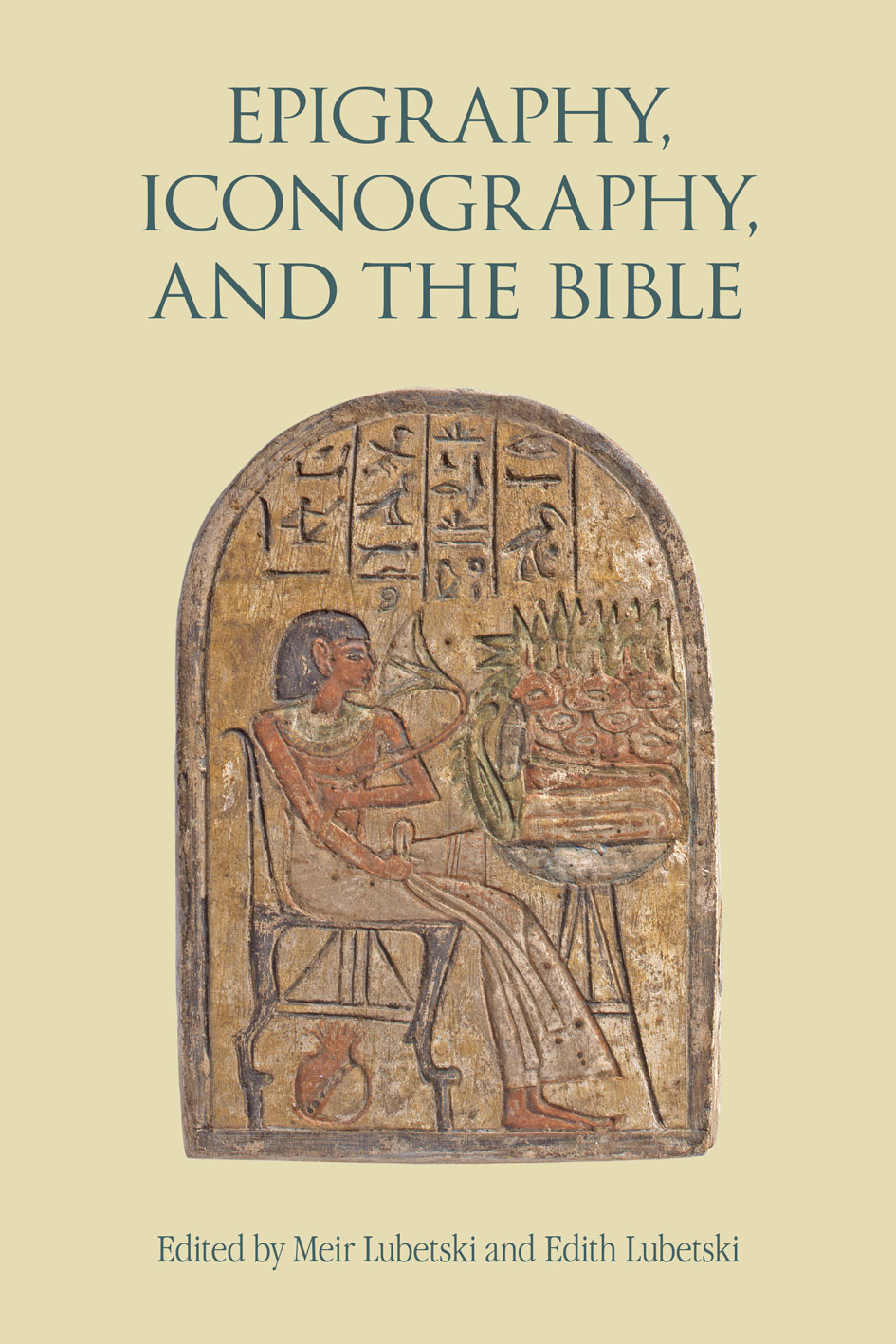
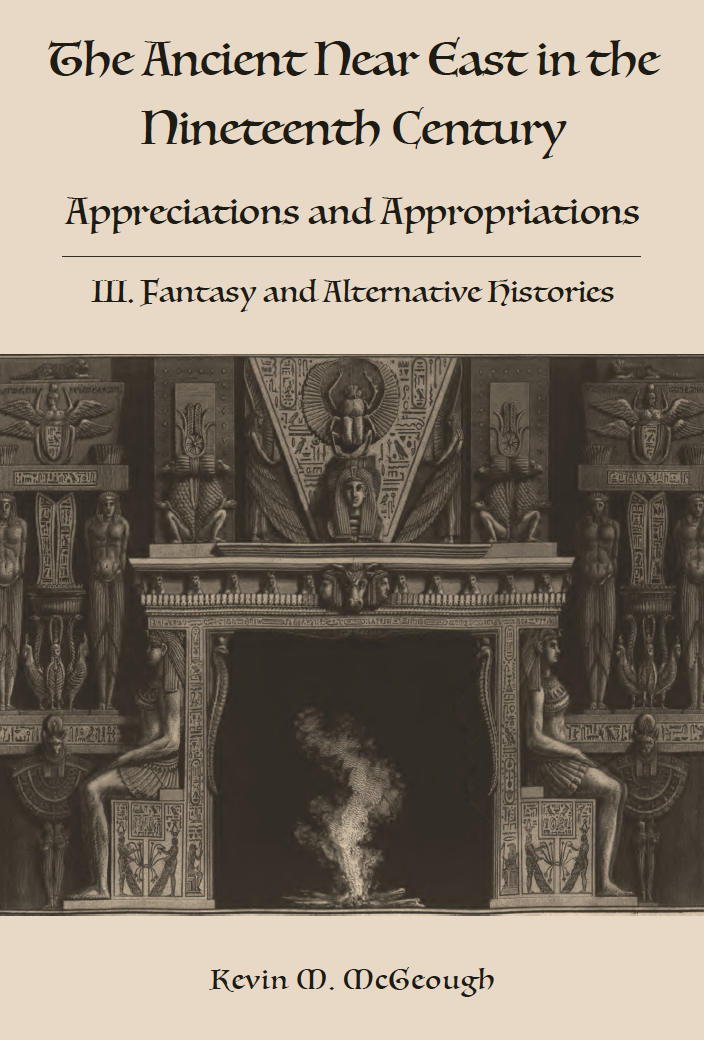
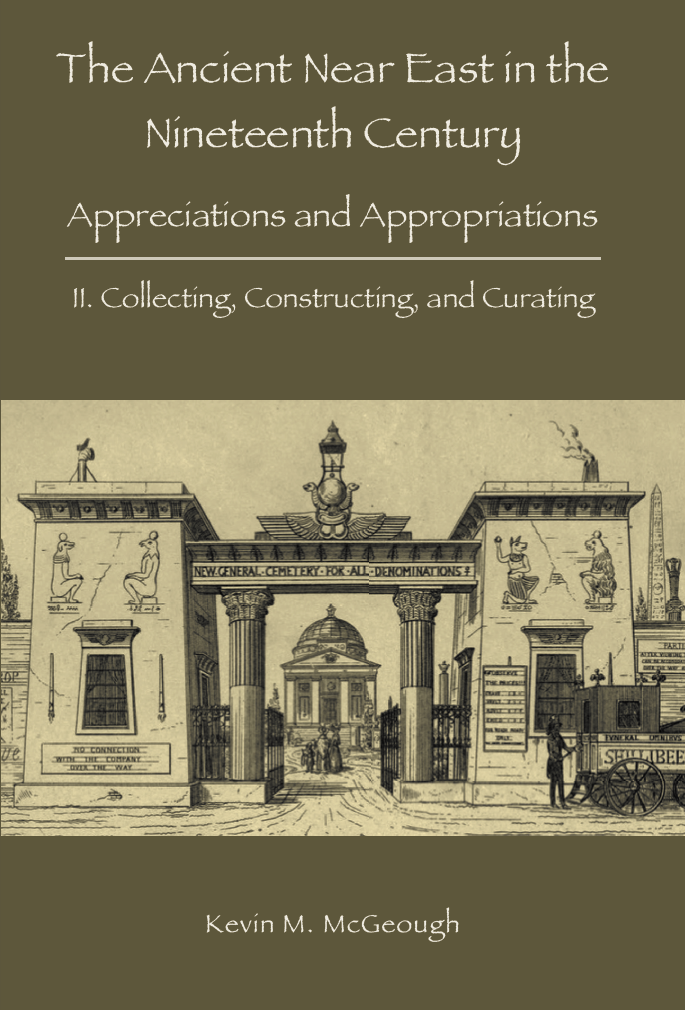
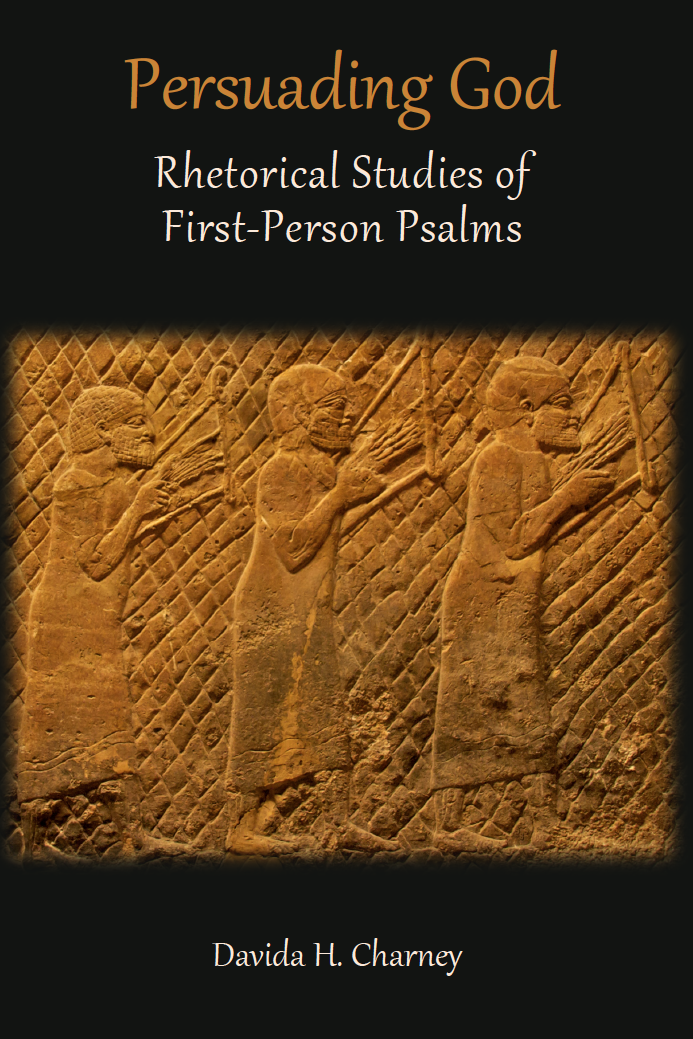
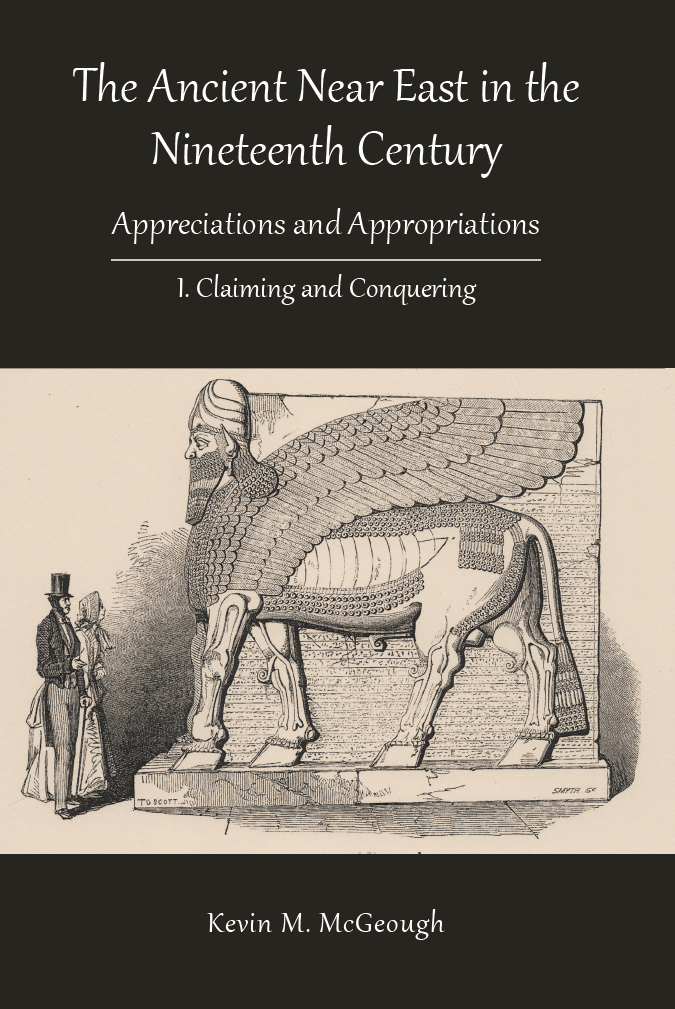
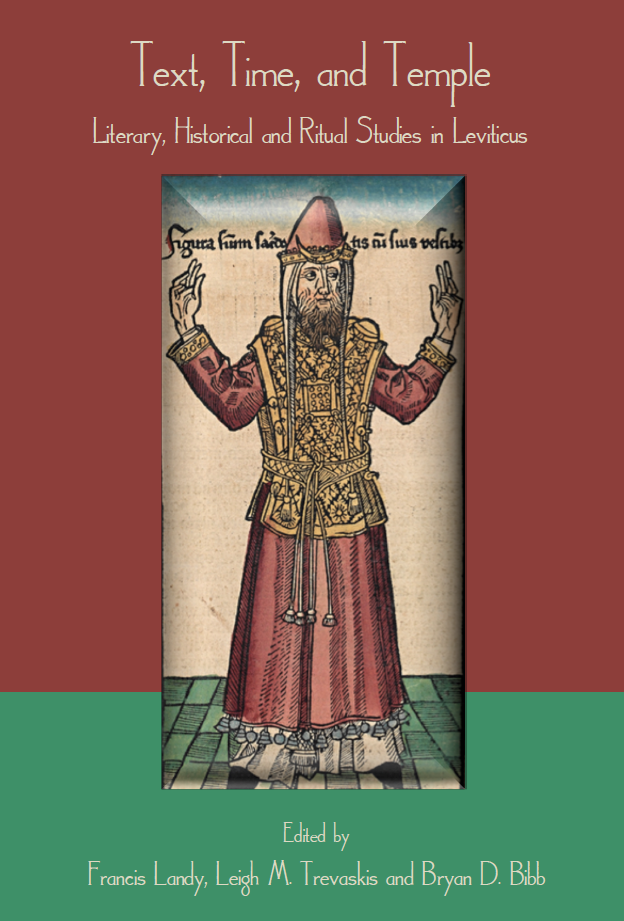
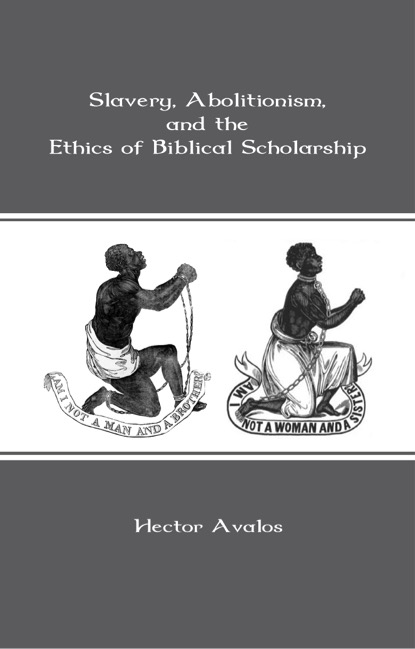
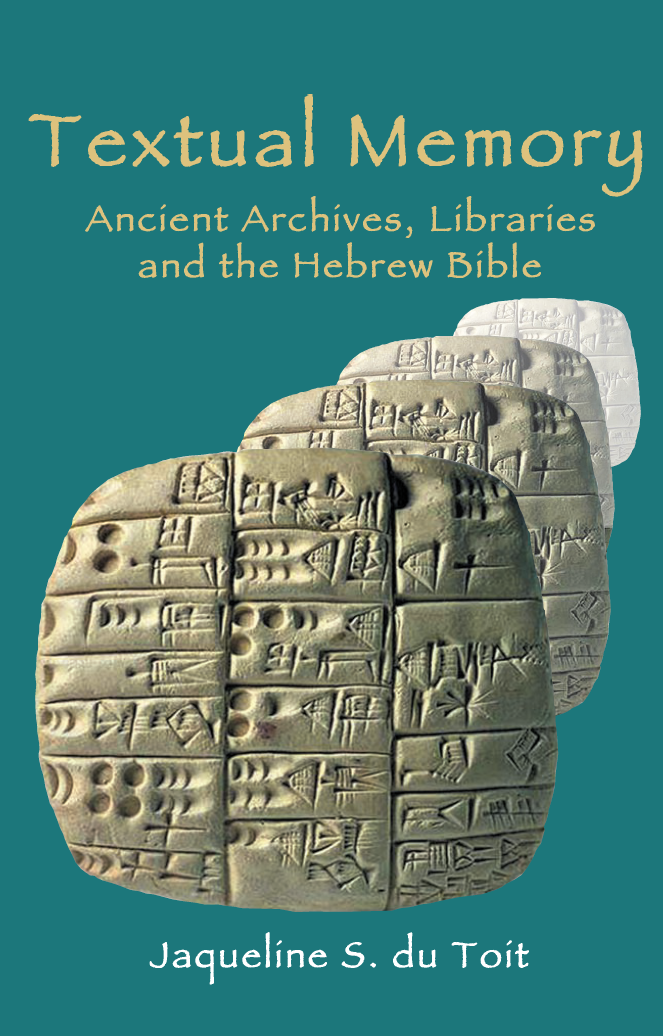
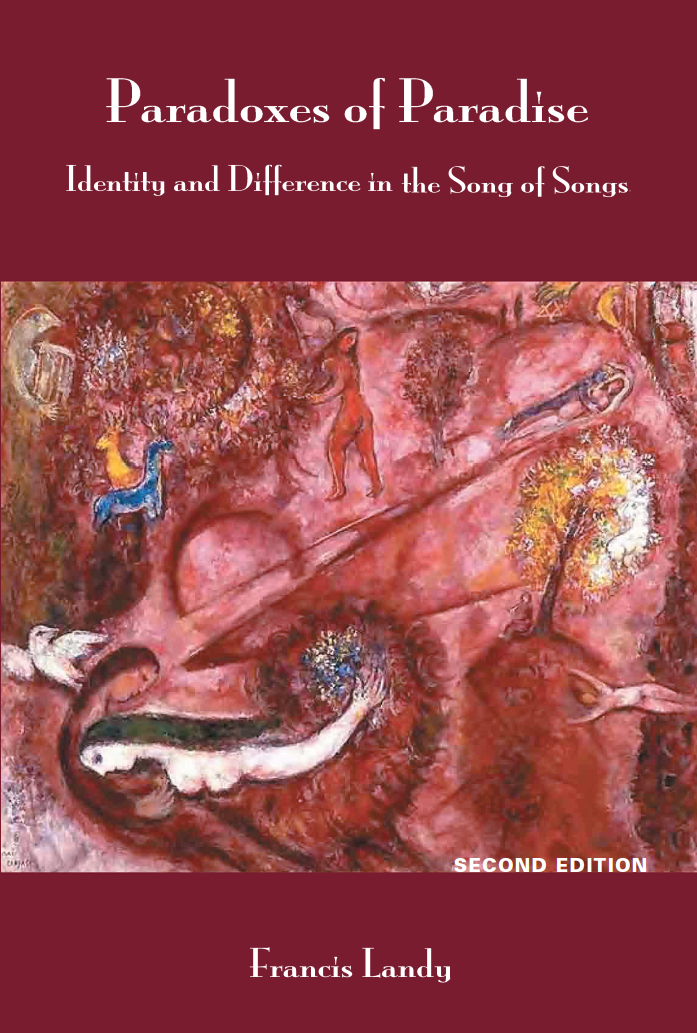
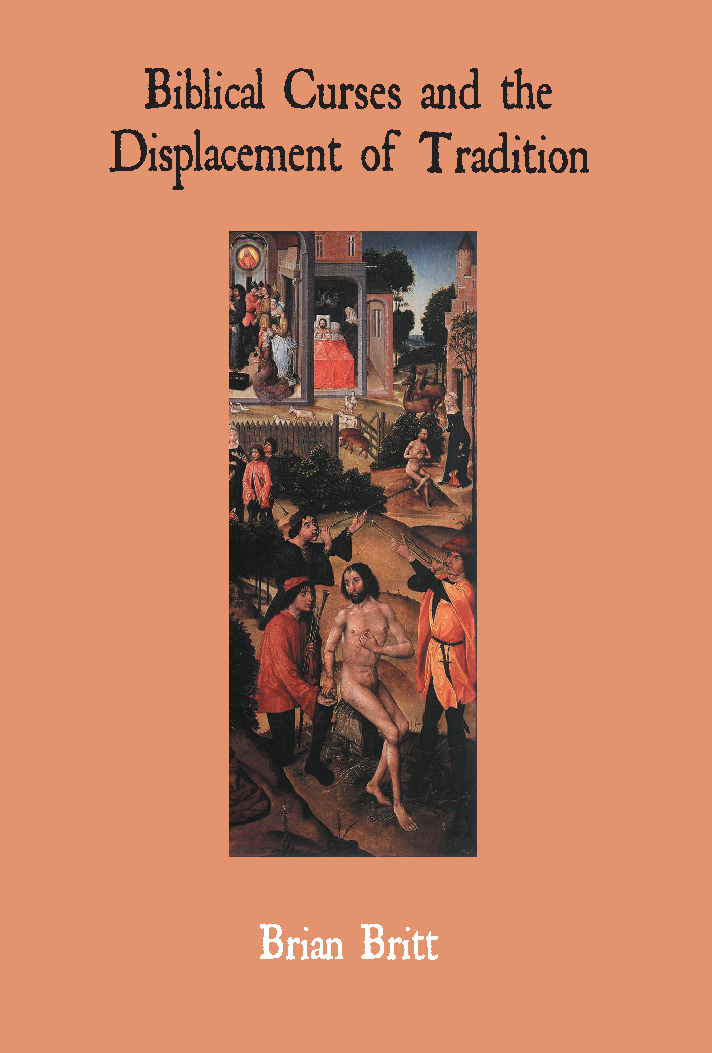

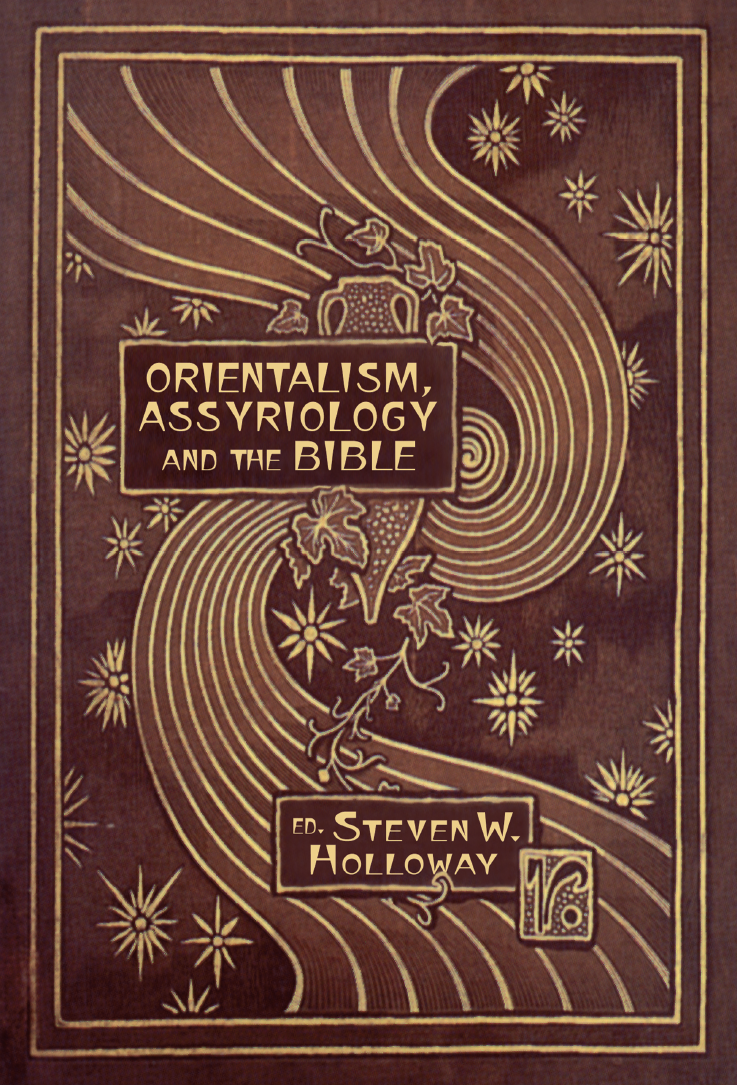


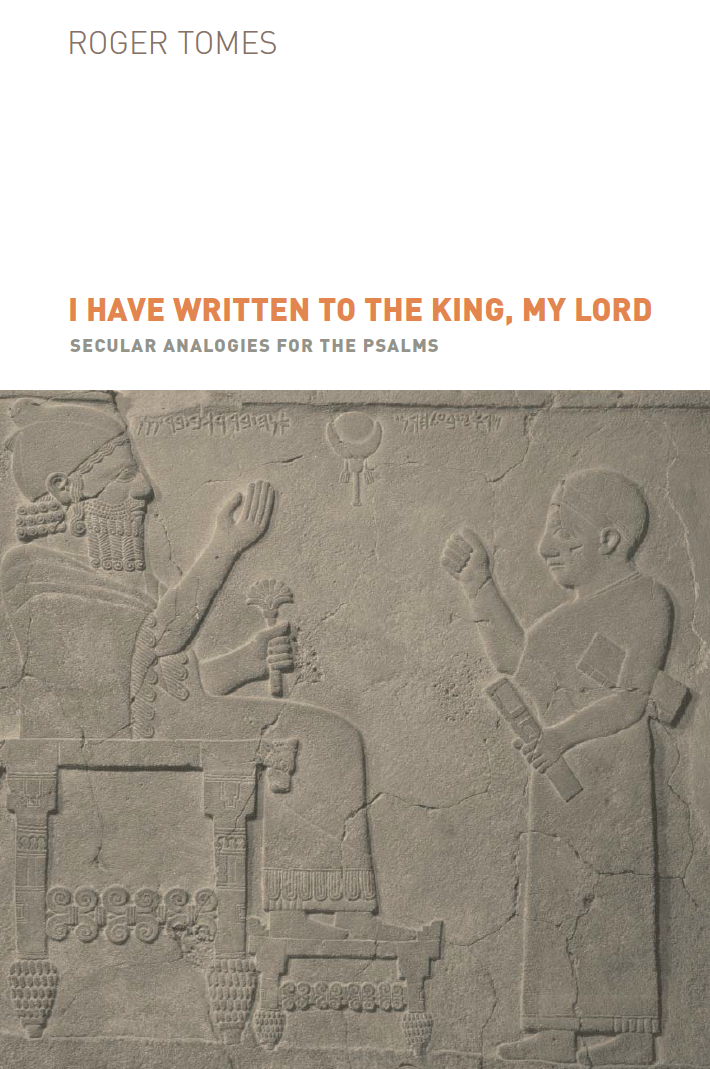

Deuteronomy and Environmental Amnesia
Deuteronomy and Environmental Amnesia